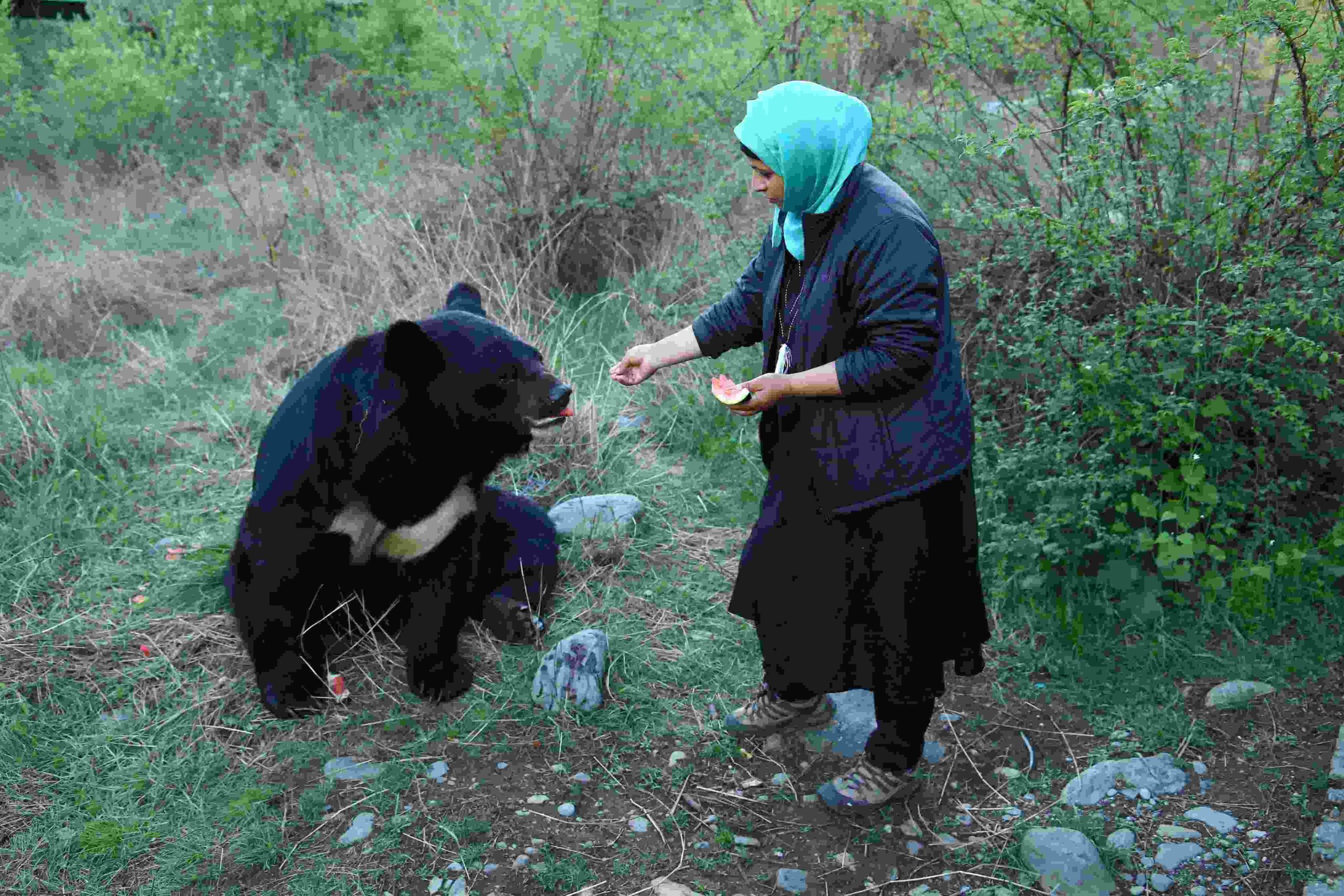/ground-report/media/post_banners/wp-content/uploads/2021/08/Aaliya-Mir.jpg)
In April this year, Aaliya Mir received a call to rescue a snake from the bushes around a quiet Gupkar area of the capital Srinagar. Whoever heard this news was filled with panic. In such a situation, the team of Wildlife SOS took the initiative to remove the leopard safely from the city.
Last year in Dec Aaliya Mir captured a leopard, Mir's team helped the forest department of Kashmir save the life of the leopard and released it into the forest. After several hours of hard work, the city breathed a sigh of relief.
Aaliya Mir
Aaliya Mir, who lives in the Wazir Bagh area of Srinagar, has completed higher education in mathematics. She always had a good attitude towards animals, but she did not get a chance to help much during her studies. After completing her studies, she started teaching in a school in Srinagar. Mir was married to a veterinarian. After this, her inclination towards conservation increased.
Aaliyah said “When a big and strong animal has to be saved, then our breath also gets stuck. We also take utmost care, ” She said, referring to the difficulties she faced in her work.
“Once I was trying to catch an animal so that it could be released safely in the forest. It was difficult to convince the people around me that even though I was a woman, I could do this work. how? People standing there were saying this over and over again,” Mir recalled an anecdote.
“I remember people saying, Madam, you come to the side. It will be difficult for you. But when the work was over, people were convinced."
Aaliya Mir associated with Wildlife SOS
One of these voices is the power of protection Aaliya Mir. Aaliya has been associated with Wildlife SOS since 2002; She started out as a volunteer and then took up various projects in her home state.
Today, Aaliya heads the conservation program in Jammu and Kashmir and she also serves as an education officer conducting awareness workshops is a major part of her job role. More importantly, Mir is a supporter when it comes to handling human-reptile conflicts and says she is most fascinated by the snakes she encounters on a daily basis.

Aaliya said “My work at Wildlife SOS involves taking on a variety of roles depending on the situation. I usually spend my day between WSOS Dachigam and Pahalgam rescue centres and various locations for rescue calls or awareness programmes. "
“I think people's behaviour towards a female protector creates more problems than a wild animal. It is difficult and stinging at a time when my entire focus is on protecting the animal. The animal has caused harm to many people in the area in many ways and few people want to save it, ” she says.
This task is even more difficult for Kashmir, because neither the weather favours here, nor the hilly land here is easy for this work. The instability in the political climate makes work more difficult, says Mir.
Conflict between humans and animals
According to statistics, in 2006-07, 18 people died and 134 people were injured in the human-animal conflict in the Kashmir Valley. In 2007-08, 15 people lost their lives and 181 were injured. In 2008-09, 22 persons died and 251 persons were injured. In 2009-10 21 people died and 303 were injured and in 2010-10 27 people lost their lives and 407 people were injured in human-animal conflict.

Similarly, in 2011-12, at least 32 people were killed and 485 injured, the following year (2012-13) saw 14 deaths and 3024 injuries, while 2013-14 saw 30 deaths and 437 injuries. There were 14 deaths and 225 injuries in 2014-15. In 2015-16, there were 11 deaths and 244 injuries. In 2016-17, there were 09 deaths, and 136 injuries. In 2017-18, there were 09 deaths, 162 injured.
In the year 2018-19, there were 07 deaths and 101 injuries, while in 2019-20 the figure increased to 13 deaths and 138 injuries. In the year 2020-21 till March 2021, 12 people died, while 146 were injured in the conflict.
Our society is still male-dominated
She said “Our society is still male-dominated. This makes it difficult for any woman to move forward, especially in a job that everyone considers unsuitable for a woman. For example, while working as a rescuer, I was often dismissed or humiliated by people who didn't believe I could go to work. People used to say,
'Yeh kya kar payegi..ye toh aurat hai…' (What can she do after all, she is a woman) Even her expressions made it clear That they didn't take me seriously.'

She pointed out that over the years, leopard attacks have increased due to the increase in adaptation to the lifestyle of humans. "A similar case is also seen in wild bears. They are omnivores. They eat garbage and other food waste," Mir said. On wildlife conservation in Kashmir, Mir said:
"We need to preserve the natural habitat of wild animals to stop these conflicts. Animals are not evil, they are part of our coexistence. They need care and affection, just like humans do," she explained.
Keep Reading
Indian agriculture household earns just Rs. 10,218 in a month: Govt
Post-harvest losses still high, reveals data shared in Lok Sabha
Khadi Haat village's power-free waste water treatment solution and more
What's so special about EkLavya Foundation's eco-friendly building?
Support usto keep independent environmental journalism alive in India.
Follow Ground Report onX,InstagramandFacebookfor environmental and underreported stories from the margins. Give us feedback on our email id[email protected].
Don't forget to Subscribe to our weekly newsletter,Join our community onWhatsApp,Follow our Youtube Channelfor video stories.